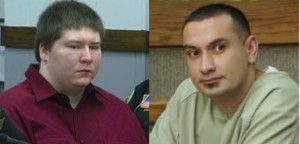

By Jim Lovering April 6, 2016
In 1961, a Yale scientist carried out an experiment that quickly achieved notoriety verging on infamy. No one suffered direct harm, but test subjects learned something about themselves they might not have wanted to know.
To perform the experiment, Stanley Milgram recruited dozens of volunteers, ordinary people from all walks of life. He told them they were participating in a study to assess how punishment affects learning. Test subjects believed they were doling out electric shocks to a volunteer who was physically restrained in another room. They were told to increase the voltage with each wrong answer.
Only later did these subjects learn the setup was rigged, and no one really got shocked. The purpose of the Milgram experiment was to test obedience to authority, and the results were alarming. No less than 65 percent of the subjects completed the experiment, turning up the voltage and flipping the switch until they were told to stop. They continued even after the man in the other room began to shout, complain of a heart problem, and beg to be released. They continued even after he fell silent and did not respond at all to the questions.
No one forced them to go on. They did it simply because the man directing the experiment told them to continue.
Milgram’s research followed from an earlier study that was designed to test social conformity. Groups of people assembled in a room, where an examiner held up simple diagrams and asked a question for which the correct answer was obvious: which two lines are the same length?
Only one member of each group was a test subject, although he or she did not know that. Everyone else played a scripted role.
The researcher found that when scripted participants all gave the same wrong answer, many of the test subjects gave that answer too. Over many rounds of questioning, only about 25 percent of the test subjects consistently defied the group by giving the correct answers.
In the wake of this early research, similar experiments have confirmed how easy it is to manipulate someone in a controlled setting, without resorting to force or intimidation. People will do things that seem baffling to anyone who did not go through the experience.
It is not really surprising, therefore, that Brendan Dassey confessed to a crime he did not commit. He was a 16-year-old kid with an IQ of about 70. Who could possibly be more susceptible to trickery?
Police realized they were dealing with an easy mark, so they used a subtle but effective form of psychological coercion. Instead of browbeating Dassey, they pretended to be his friends. They began the interview by saying “how are you doing, buddy?”
They told Dassey his best interests lay in cooperating with them, and they led him to believe he had nothing to fear.
“BY YOU TALKING WITH US, IT’S HELPING YOU.”
“WE’RE ON YOUR SIDE.”
“WE’LL STAND BEHIND YOU NO MATTER WHAT YOU DID.”
They stressed the importance of honesty, but they also told Dassey, over and over, that they already knew the truth – they had the right answers.
“WE ALREADY KNOW WHAT HAPPENED THAT DAY.”
“WE’RE GOING TO BE ABLE TO TELL WHEN YOU’RE NOT BEING HONEST.”
In fact, Dassey did not help himself by talking to police. They were not on his side, and they did not stand behind him. Police used a framework of lies and deception to play a dull-witted teenager against himself, to coax him into telling the fable they wanted to hear. It worked exactly as a social scientist would have predicted. Read More »